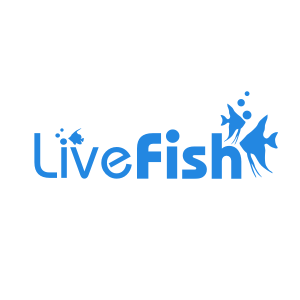Nanochromis Transvestitus 2.5cm
NEW ARRIVAL!
The Nannochromis Transvestitus is a fascinating and relatively rare dwarf cichlid known for its striking sexual dimorphism and intriguing behaviours. Native to the Congo Basin in Africa, this fish is a gem for aquarists seeking a unique and vibrant addition to their collection. With their vibrant colours, an intriguing name derived from their gender-reversing appearance, and peaceful demeanour compared to other cichlids, they are a captivating choice for aquarists who appreciate a unique fish.
Nanochromis Transvestitus
The Nannochromis Transvestitus is a fascinating and relatively rare dwarf cichlid known for its striking sexual dimorphism and intriguing behaviours. Native to the Congo Basin in Africa, this fish is a gem for aquarists seeking a unique and vibrant addition to their collection. With their vibrant colours, an intriguing name derived from their gender-reversing appearance, and peaceful demeanour compared to other cichlids, they are a captivating choice for aquarists who appreciate a unique fish.
In the fish world, the males are always known to be the prettier of the two sexes. However in the case of the Nannochromis transvestitus the females are far more colourful, boasting deep crimson bodies with shimmering blue highlights along their sides and fins. Males, in contrast, are more subdued, with a pale tan or silvery body and faint horizontal striping. Both sexes have streamlined bodies and slightly pointed dorsal and anal fins, contributing to their elegant profile. Adults typically reach a maximum size of about 6-7 cm. These fish are relatively peaceful for African cichlids, though they can become territorial during breeding. They are shy by nature and prefer a well-planted tank with plenty of hiding spots.
Breeding this species in captivity is achievable but requires some initial care. They are substrate spawners, typically laying eggs in small caves or crevices. Females take the lead in courtship, enticing males to their chosen nesting site. Once eggs are laid, the female guards them while the male defends the surrounding territory. Eggs hatch within 2-3 days, and the fry becomes free-swimming within a week. Providing a high-protein diet like live baby brine shrimp will enhance the survival and growth of the fry.
Tank Recommendations for your Nannochromis Transvestitus
A tank of at least 60 litres is recommended for a pair or small group of Nannochromis transvestitus. The tank should mimic their natural habitat with sandy substrate, driftwood, and plenty of plants to create hiding spots and reduce stress. Smooth stones and small caves are essential for breeding. Water conditions must be stable, with slightly acidic to neutral pH (6.0-7.0) and soft to moderately hard water. A gentle water flow and efficient filtration will help maintain optimal conditions which can in turn entice spawning.
Suitable Tank Buddies
Nannochromis transvestitus can coexist peacefully with other calm, small species that do not outcompete them for food or invade their territory. Tank mates should be carefully chosen to ensure harmony.
Usually Compatible
Small, peaceful schooling fish like neon tetras, ember tetras, and harlequin rasboras make good companions. Bottom-dwelling species such as corydoras catfish can also work well, as they inhabit different levels of the tank.
Sometime Compatible
Other dwarf cichlids, such as Apistogramma species, may coexist if the tank is large enough to establish territories. Small livebearers, like guppies or endler's livebearers, might also be suitable in larger tanks.
Rarely Compatible
Aggressive or boisterous species, such as larger cichlids, barbs, or gouramis, are unsuitable tank mates. Similarly, fin-nipping fish or highly competitive feeders may cause stress to Nannochromis transvestitus.
Feeding your Nannochromis Transvestitus
This species is carnivorous and thrives on a diet of high-quality live, frozen, or freeze-dried foods. Bloodworms, brine shrimp, daphnia, and small earthworms are excellent choices. They may also accept high-quality pellet or flake foods designed for carnivorous fish, though live or frozen foods are preferred to enhance their colour and breeding readiness.
| Scientific Name | Nanochromis transvestitus |
|---|---|
| Care Level | Moderate |
| Common Names | Nannochromis Transvestitus, Transvestitus Cichlid |
| Diet | Carnivore |
| Fish Family | Cichlidae |
| Lifespan (years) | 5 |
| Max. Length (cm) | 7 |
| Min. Tank Volume (l) | 60 |
| Origin | Africa |
| Sociability | Peaceful |
| Venomous | No |
| Water Conditions | 24-28° C, pH 6.0 - 7.0 |
| Plant Safe | Yes |




